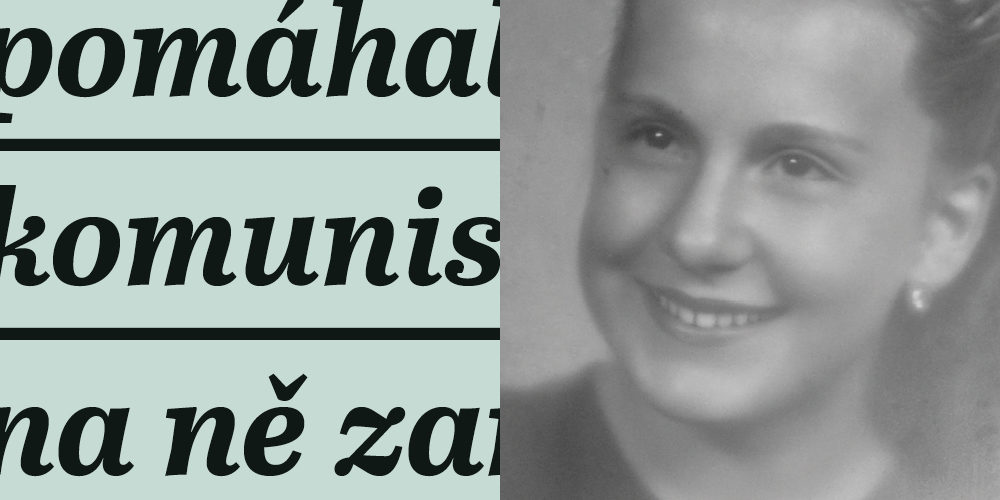
At the end of the summer of 1944, an unknown man – Nikolai Alexandrovich Kuzmin – was standing at the door of the Košárek family’s house near Malá Bystřice in Moravian Wallachia. He was the commander of the Soviet paratrooper unit “Za rodinu” (For the nation). When the Košáreks agreed to help, he waved to the others:
“One partisan turned into twenty-five. They used our house as a base,” says Jaromíra Kočnarová, then a Košárek.
The family helped the partisans in every possible way – they supplied them with food, washed and repaired their clothes, and shared sleeping quarters. The partisans made eight-year-old Jaromíra a liaison. Half-dead with terror, she carried papers with messages through the forest. The soldiers advised her to eat the messages if she was caught.
In the autumn, the Nazis discovered a partisan hideout in a barn near the Štůsek family. The soldiers surrounded the farmhouse and attacked and shot many partisans on the spot. Nothing happened to the Štůsek family. The partisan Nikolai (Kolya) decided to execute the farmer, saying: “He was the one who betrayed us if nothing happened to him. He will lose his life for this!” Jaromíra recalls these dramatic moments: “My mother begged him desperately, saying that the neighbor had children and that Kolya couldn’t know if it had really been him. He didn’t listen.” The commander of the partisans watched the Štůsek’s cottage every evening, and when he saw the family’s head at the window one day in January 1945, he shot him. “My mom cried and despised Kolya.”
Fortunately, the hiding place of the Košárek family was never uncovered. Everyone on the farm lived to see the end of the war. “I was jumping for joy until my parents thought I was crazy,” Jaromíra Kočnarová says.
Liberation
Nazi Germany was defeated in the Second World War by the determination, bravery, and combat deployment of soldiers from the United States, Great Britain, Poland, France, the Soviet Union, and other countries and nations. But the Soviet Union, led by the dictator Stalin, did not join the Allies until it itself was attacked by the Nazis in June 1941. Until then, the USSR had acted as a partner of Nazi Germany in the spirit of the Molotov-Ribbentrop Pact concluded shortly before the outbreak of the war. At that time, when tens of thousands of Czechoslovaks fled from the Nazis to the USSR, they often ended up in gulag labor camps. The Red Army did not enter the war until the summer of 1941 after Nazi Germany had invaded.
The Soviet Union deployed over six million soldiers to the Eastern Front. We can speak of great heroism and huge losses. The Red Army, with great effort, defeated the better armed and trained German Wehrmacht, and with it the prestige of the “land of the Soviets” logically grew. However, when we talk about the liberation of Czechoslovakia, we must mention, besides the Soviet victims (up to 140,000 Red Army soldiers are said to have died), the tens of thousands of our soldiers fighting alongside the Allies on the Eastern and Western fronts, the brave Slovak insurgents, the paratroopers, partisans and thousands of their helpers, the insurgents from the barricades of Czech towns at the end of the war, and last but not least the soldiers of the American Army who liberated part of the Czechoslovak territory from the west, as well as the forgotten Romanian soldiers advancing with the Soviets from the east. On 8 May 1945, after six long years, peace reigned in Europe and Czechoslovakia became a liberated country. But not free.



